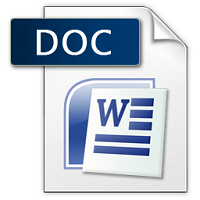₹198.00
Scroll down for Match your questions with Sample
Note- Students need to make Changes before uploading for Avoid similarity issue in turnitin.
Another Option
UNIQUE ASSIGNMENT
0-20% Similarity in turnitin
Price is 700 per assignment
Unique assignment buy via WhatsApp 8755555879
Description
| SESSION | November 2023 |
| PROGRAM | BBA |
| SEMESTER | IV |
| course CODE & NAME | Dbb2203 – MANAGEMENT ACCOUNTING |
Set – 1
- Describe the primary functions and objectives of budgetary control. Provide specific examples to illustrate each function. 10
Ans 1.
Budgetary control is a critical management tool for guiding a business towards its financial and operational goals. Its primary functions and objectives can be outlined as follows:
Planning: Budgetary control begins with planning, where financial targets for various departments or sectors within an organization are established. This involves setting goals for revenue, expenditures, production levels, and other financial metrics. For example, a retail company might set a budget for sales targets and inventory purchases for the Its Half solved only
Buy Complete from our online store
https://smuassignment.in/online-store/
MUJ Fully solved assignment available for session SEPT 2023.
Lowest price guarantee with quality.
Charges INR 198 only per assignment. For more information you can get via mail or Whats app also
Mail id is aapkieducation@gmail.com
Our website www.smuassignment.in
After mail, we will reply you instant or maximum
1 hour.
Otherwise you can also contact on our
whatsapp no 8791490301.
- Company XYZ has budgeted the following production costs for the upcoming quarter:
Direct Materials: $50,000
Direct Labor: $30,000
Factory Overhead: $20,000
Calculate the total standard cost for production. If the actual production costs turn out to be $100,000, determine the budget variance and analyze its implications. 10
Ans 2.
To understand the total standard cost for production and the implications of a budget variance for Company XYZ, let’s break down the components and calculations involved.
Total Standard Cost Calculation
Company XYZ’s production costs for the upcoming quarter are divided into three main categories: Direct Materials, Direct Labor, and Factory Overhead. The costs for each category are as follows:
- Direct Materials: $50,
- Imagine you are a financial analyst in a manufacturing company. Develop a detailed budget for the upcoming fiscal year, considering various factors such as sales forecasts, production costs, and overhead expenses. 10
Ans 3.
Developing a detailed budget for the upcoming fiscal year as a financial analyst in a manufacturing company involves a multi-faceted approach, focusing on key areas such as sales forecasts, production costs, and overhead expenses. The following plan outlines the necessary steps and considerations:
- Sales Forecasting: The foundation of the budget is the sales forecast. Begin by analyzing historical sales data, market trends, and economic indicators. Consider factors like seasonality, market demand, and potential new product launches. Predict the expected units
SET – 2
- A manufacturing company sets a standard labor cost of $15 per hour for producing a product. During a particular month, the actual labor hours worked were 2,000 hours, and the actual labor cost incurred was $30,000. Calculate the labor rate variance and the labor efficiency variance. Interpret the results and provide recommendations for improvement. 10
Ans 1.
To analyze the labor cost variances of the manufacturing company, let’s first understand what labor rate and labor efficiency variances are. Labor Rate Variance focuses on the difference between the actual hourly wage paid and the standard hourly wage set by the company. Labor Efficiency Variance, on the other hand, looks at the difference in the amount of labor time actually used
- Company ABC has the following financial data:
Current Assets: $200,000
Current Liabilities: $120,000
Inventory: $80,000
Accounts Receivable: $60,000
Accounts Payable: $40,000
Calculate the company’s working capital, current ratio, and quick ratio. Analyze these ratios and provide insights into the company’s liquidity position. 10
Ans 2.
To analyze the financial health of Company ABC, we’ll focus on three key metrics: working capital, current ratio, and quick ratio. These metrics are crucial in understanding the company’s liquidity and its ability to meet short-term obligations.
Working Capital Working capital is calculated as the difference between a company’s current assets and its current liabilities. It’s a measure of a company’s operational efficiency and its short-term
- Assess the effectiveness of ratio analysis in evaluating a company’s financial performance. Discuss the limitations of using ratios and suggest alternative financial analysis tools that can complement or overcome these limitations. 10
Ans 3.
Ratio analysis is a widely used tool for evaluating a company’s financial performance, offering several advantages but also facing certain limitations. To complement or overcome these limitations, other financial analysis tools can be employed.
Effectiveness of Ratio


